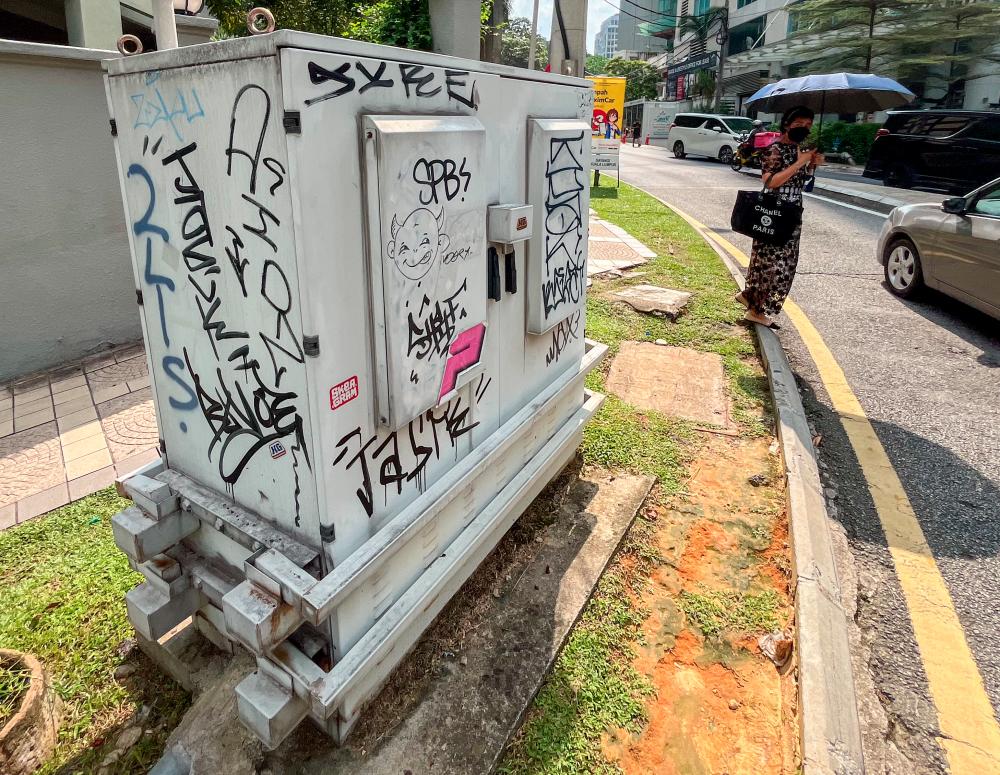PETALING JAYA: Lawyer, urban planning expert and former Petaling Jaya City Councillor Derek Fernandez said vandalism is a growing problem in the country, with about 14,229 acts of destruction involving public property reported from 2020 to early this year.
“Police statistics show that the vandalism includes damaging public facilities and utilities, such as fences and walls that are splashed with paint and road signs that are destroyed.
“The problem is particularly pronounced in urban areas and incurs substantial annual expenses for management and restoration. In extreme cases, such acts could endanger lives, such as when fire hydrants, traffic lights or road safety equipment are vandalised.”
He said the acts cause inconvenience to the public and visually tarnish urban landscapes.
He added that those who commit vandalism are usually driven by anger and frustration stemming from various factors, such as socioeconomic conditions, conflicts with authority, poor upbringing or mental health issues.
ALSO READ: 1,492 cases of telecommunication asset theft, vandalism recorded last year
“When I was a councillor, a person known as the ‘dustbin burner’ roamed around and set fire to plastic rubbish bins.
“When confronted, he claimed the bins were attempting to harm him, which demonstrated his delusional mindset.”
While acknowledging the complex challenge of addressing vandalism, he stressed that strict enforcement of anti-vandalism laws is necessary.
“Implementing stringent punishments for vandalism involving public safety infrastructure serves as a deterrent. It highlights the seriousness of the offence and demonstrates a commitment to protecting public assets.”
UiTM College of Creative Arts lecturer Amandus Paul Panan said it is disheartening to witness vandalism of public facilities or cultural landmarks.
ALSO READ: Man nabbed for vandalism at house of worship
“Such behaviour results in the defacement or destruction of important community assets and influences public perceptions of genuine art versus graffiti.
“By damaging cultural assets, vandals strip away layers of history and shared experiences, robbing future generations of their cultural inheritance and diminishing the sense of responsibility to preserve public property.”
He said the financial burden of restoring vandalised public facilities could strain government budgets by diverting resources from other community projects and initiatives.
In April, Communications Deputy Minister Teo Nie Ching said 1,429 cases of theft and vandalism of telecommunication assets were reported last year, resulting in RM33.66 million in losses.
Amandus said the loss underscores the need for robust protective measures, community engagement, strong legal frameworks and strong policies to preserve public facilities.
He said frequent acts of vandalism could create an atmosphere of neglect and disrepair, further impacting community morale and potentially leading to increased crime and antisocial behaviour.
ALSO READ: Tackle vandalism menace before it escalates
“Multiparty collaboration is essential to mitigate vandalism. Service providers should help deter theft and vandalism by enhancing security measures and installing CCTV cameras and sensors.”
He said enforcing laws against vandalism sends a clear message that destructive behaviour would not be tolerated and would be met with consequences.
“The combination of open dialogues with the public and robust legal measures against vandalism forms a comprehensive approach to protecting public art and cultural landmarks.”









